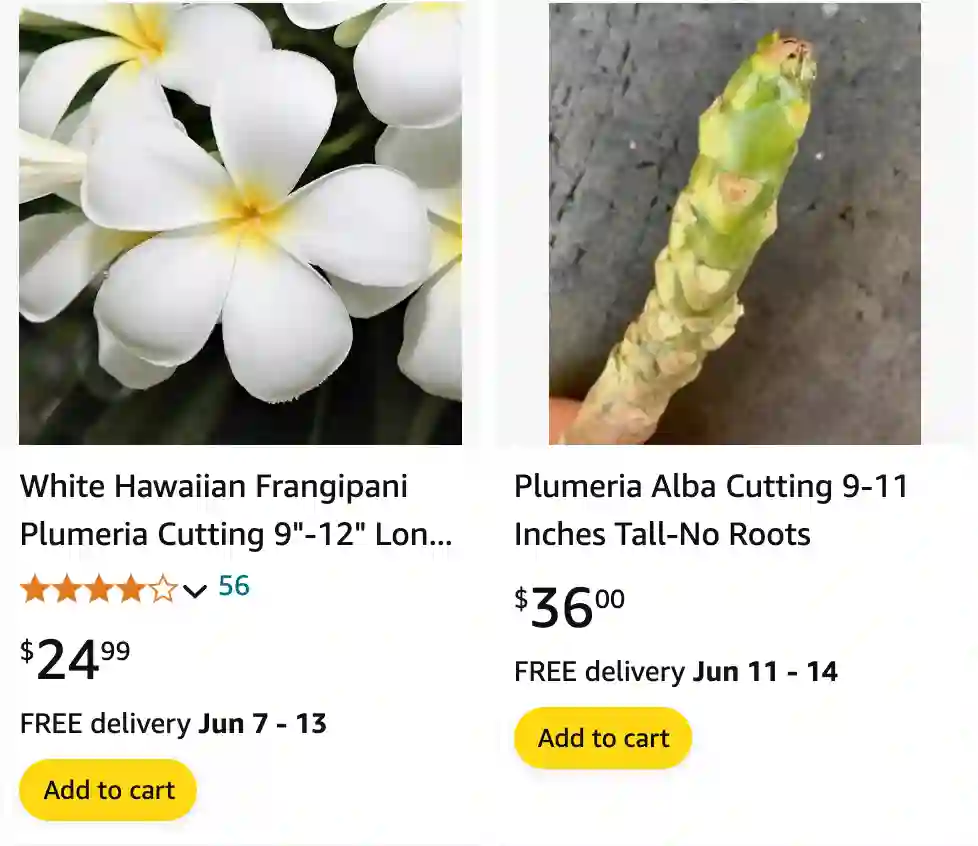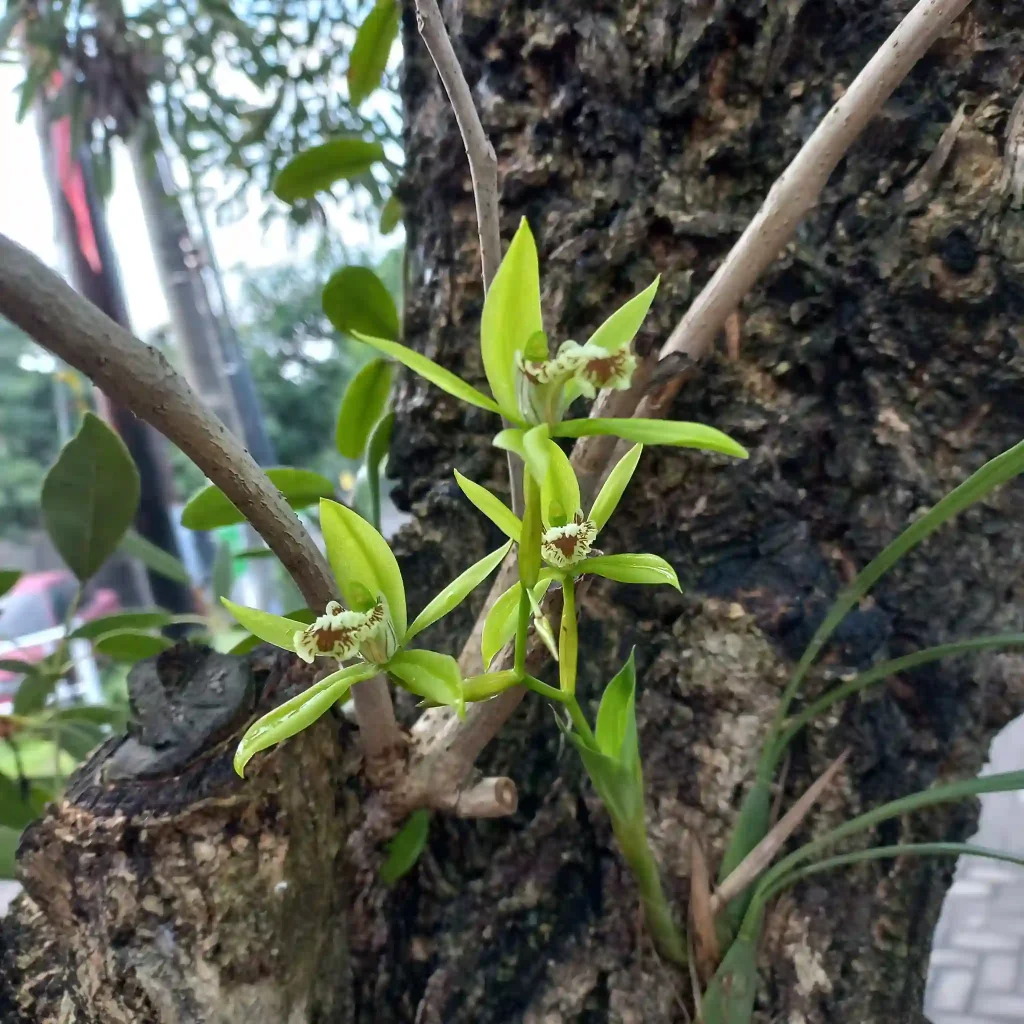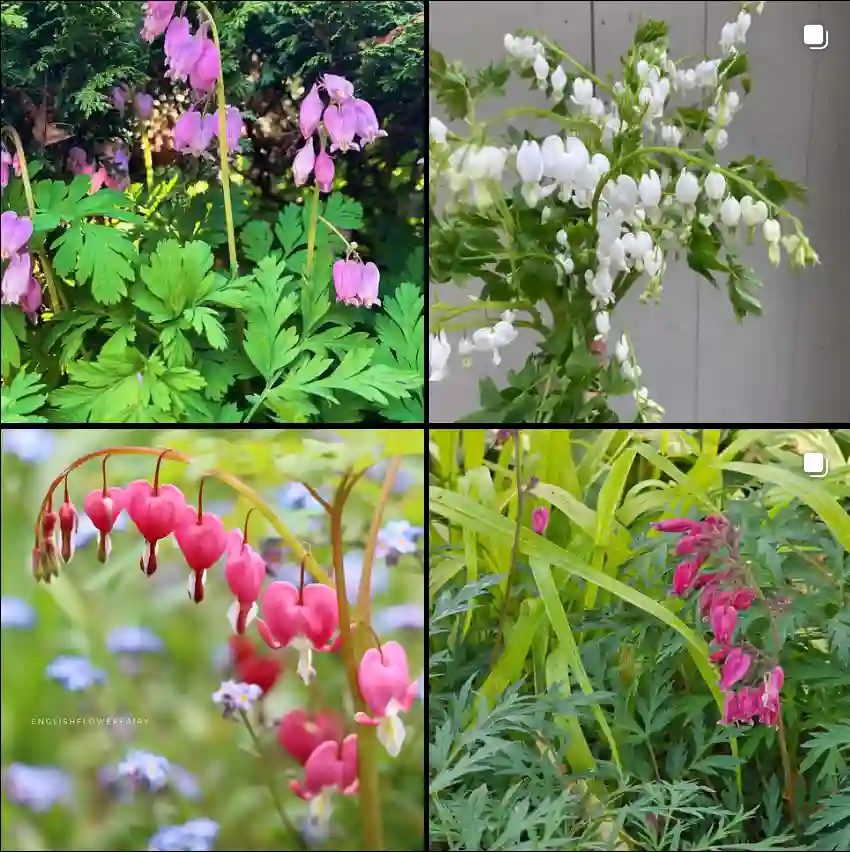
What is Plumeria Alba?
Plumeria Alba, also known as the White Frangipani, is a species of the genus Plumeria, native to the Caribbean and Central America. This plant is famous for its beautiful, fragrant white flowers with a yellow center. The blooms are not only visually appealing but also emit a delightful scent that can fill your garden with a tropical ambiance. Plumeria Alba can grow as a small tree or shrub, reaching heights of up to 25 feet under ideal conditions.
The leaves of Plumeria Alba are elongated, dark green, and glossy, providing a lush backdrop for the striking flowers. This plant is well-suited to warm climates and can thrive in USDA hardiness zones 10-12. It’s often used in landscaping and as an ornamental plant due to its aesthetic appeal and relatively easy maintenance.
19 Species in Genus Plumeria
Plumeria Obtusa vs Plumeria Alba
Plumeria Obtusa has a wonderfully rounded, glossy leaf and a slightly sweeter scent compared to Plumeria Alba, which I find to be a bit more refreshing and less overwhelming.
Plumeria Alba vs Frangipani
I’ve grown Plumeria Alba and found its fragrance to be subtle yet enchanting, while Frangipani, which is often a name for the same plant, has a more intense aroma that can really fill a garden space.
Plumeria Rubra vs Plumeria Alba
Between Plumeria Rubra and Plumeria Alba, I’ve always preferred Rubra for its vibrant red and pink blooms, which add a splash of color that contrasts beautifully with Alba’s more delicate white flowers.
How to Root a Plumeria Alba?
Rooting Plumeria Alba can be a rewarding experience, allowing you to propagate new plants from cuttings. Here’s a step-by-step guide on how I root my Plumeria Alba:
- Choosing the Cutting: Select a healthy, mature stem from the parent plant. The cutting should be about 12-18 inches long and free from any disease or damage.
- Preparing the Cutting: Remove any leaves from the lower part of the cutting, leaving a few at the top. Allow the cutting to dry and callous over for a few days. This step is crucial to prevent rot when the cutting is planted.
- Planting the Cutting: Fill a pot with well-draining soil mix, such as a combination of perlite and potting soil. Insert the cutting about 2-3 inches into the soil. Water lightly to settle the soil around the cutting.
- Providing the Right Conditions: Place the pot in a warm, sunny location with indirect light. Water sparingly until roots develop, usually within 4-8 weeks. Overwatering can lead to rot, so it’s better to err on the side of caution.
- Transplanting: Once the cutting has rooted, you can transplant it to a larger pot or directly into your garden. Ensure it gets plenty of sunlight and regular watering, gradually increasing as the plant establishes itself.
How to Care for Plumeria Alba?
Caring for Plumeria Alba involves providing the right conditions and regular maintenance to keep the plant healthy and thriving. Here are some tips based on my experience:
- Sunlight: Plumeria Alba loves the sun. It needs at least 6 hours of direct sunlight daily to produce those beautiful blooms. Inadequate light can result in fewer flowers and leggy growth.
- Watering: While Plumeria Alba enjoys regular watering, it’s important to let the soil dry out between waterings. Overwatering can cause root rot, a common issue with this plant. In the growing season, water thoroughly, but reduce watering in the dormant winter months.
- Soil: Well-draining soil is a must. A mix of cactus soil and perlite works well. This ensures that excess water drains away quickly, preventing root rot.
- Fertilizing: Use a balanced fertilizer with a higher phosphorus content to encourage blooming. Fertilize every 2-3 weeks during the growing season. Avoid high nitrogen fertilizers as they can promote leaf growth at the expense of flowers.
- Pruning: Regular pruning helps maintain the shape and size of your Plumeria Alba. Remove dead or damaged branches and spent flowers to encourage new growth.
- Pest Control: Watch out for pests like aphids and spider mites. Regular inspection and using insecticidal soap can keep these pests at bay.
How to Propagate Plumeria Alba?
Besides rooting cuttings, Plumeria Alba can also be propagated by seeds, though this method is less common and takes longer to produce a flowering plant. Here’s a brief overview:
- Collecting Seeds: After flowering, Plumeria Alba may produce seed pods. Allow these to mature and dry on the plant before collecting the seeds.
- Planting Seeds: Sow the seeds in a well-draining soil mix, covering them lightly. Keep the soil moist and place the container in a warm, sunny spot.
- Germination: Seeds typically germinate within 1-3 weeks. Once seedlings are large enough to handle, transplant them into individual pots.
What to Plant with Plumeria Alba?
Companion planting can enhance the beauty and health of your garden. Here are some plants that pair well with Plumeria Alba:
- Tropical Plants: Consider planting other tropical species like hibiscus, bougainvillea, or bird of paradise. These plants thrive in similar conditions and create a lush, vibrant landscape.
- Ground Covers: Low-growing ground covers such as mondo grass or creeping thyme can add texture and fill in the space around the base of your Plumeria Alba.
- Complementary Colors: Plants with flowers in complementary colors, like red or purple, can create a striking contrast with the white blooms of Plumeria Alba.
By understanding and implementing these care tips and propagation techniques, you can enjoy the stunning beauty and fragrance of Plumeria Alba in your garden. Happy gardening!
If i die, water my plants!



